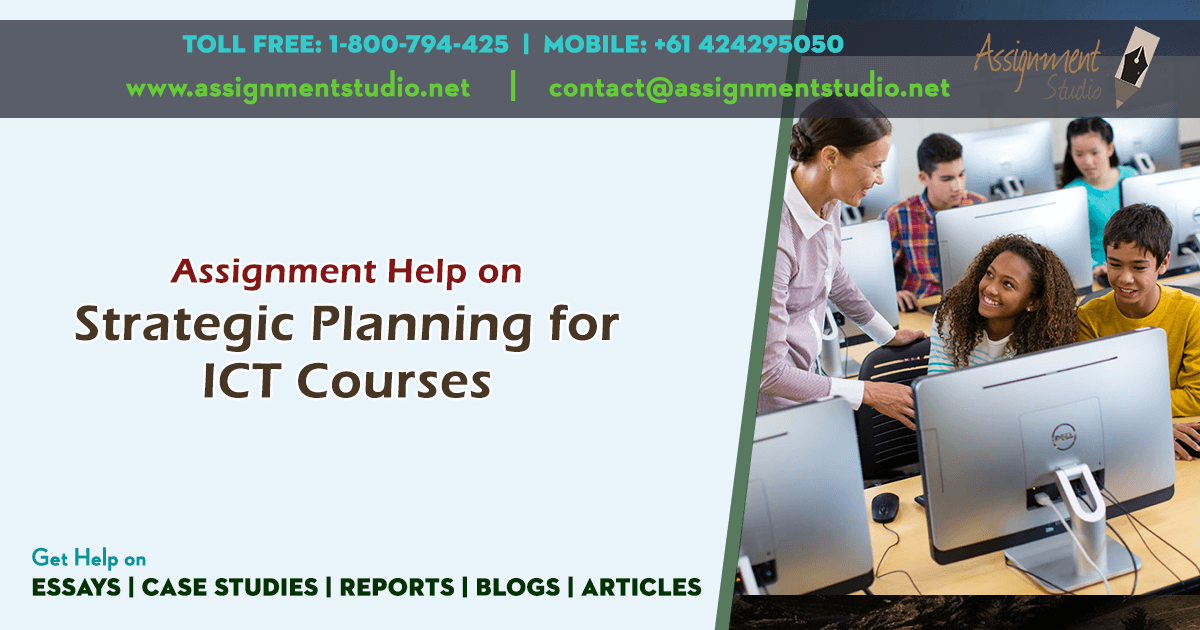Strategic Planning for ICT Courses
Introduction
This is the final combination of six reports comprising the research and development done by six members of our group. All of we have divided each segment of the strategic plan as how universities will assess about the up-to-date and relevant course that are according to the new technologies launched in the business and market world. I am presenting the names of participants that play major role in comprising this concise report:
-Turki- Information Age
– Zhinan Guo – The three Era Model
– Damien- Leavitt Diamond
– Junyong Wu- Strategic IS for leader report
-Ahmed- Michael Porter Strategy
-Lu Ang- Strategic Paradox
I have written the name as the strategy develops from 1st stage to the completion level. This report is about the different strategies present in the field and is helpful for the universities to plan strategically to provide relevant and up-to-date ICT courses. Here all the strategies are presented sequentially. It is recommended here to utilize the little or specific portion related to your planning in your strategy. It means you have to consider are the minor and major details of your business plan, in this case university strategic plan for introducing the relevant ICT course to increase their growth. You have to come up with you own unique strategic plan that is according to your requirements and ensures future success. Information Technology is relatively new subject and in the near past, the information technology was only considered the part of machinery to increase the speed of project and the quality presentation of documents and business record. With the perceived success of ICT in the business supporting model it is thought to introduce the ICT courses as special courses to teach and learn the skills and applications in the practical world.

Information Age
It is also known as Computer/Digital Age and is characterized with PC and laptop computers, networking, internet, and progression. In the present era, Information technology has intruded nearly every field and especially built relation to economics. It has greater impact on worker’s output by providing them more opportunities of job than ever. The nature of system has become automated that has increased the production level and reduce the numbers of physical workers. This age has transformed the business industry into information intensive style that requires less workers and controlled capital investment.
IT Strategy and Business Value
It is seen that IT has modified its role from the back stage to the front line especially in the business strategy (Henderson 1998). It is said that the ideal complement of business strategy with the IT strategy will come up with success-oriented plan. However, IT is still facing poor attention from business bodies as an important part of strategic plan (Frohman 1982 and McKeen 1996). IT is not playing a supportive role rather it is the base of many businesses especially e-Commerce and wireless business. We know that IT has become crucial part of business success stories, so it is important to look at the different aspects of the strategic utilization of IT. Here is a brief evolution of IT strategy in development process.
With the changing technology, the business environment and infrastructure is also modified to introduce relevant tools and equipment in the offices. Therefore, ICT courses must be market driven, so that many students would consider it as their priority to take admission in this university. These courses must be intended to illustrate the uses in business.

IT Strategy and Development Process
Strategic plan useful for one business cannot take as hard & fast rule could be applicable to any business. Every business has different infrastructure, information system, and nature, so the strategies vary. However, some points are devised by focus groups to identify alternate practices that are helpful in making a new strategy as rolling planning, budget cycle, fund buckets, IT expert cum business manager, and priority rubric. Still, IT has to face a challenging position regarding its importance and effectiveness in the business success.
Managing IT Perceptions
Since long, IT is facing problem to remove the negative perceptions associated with it (McKeen and Smith 1996). There is need to understand the perception of business leaders to remove obscurities and misconceptions. The most important function is to understand the role of IT at different levels of business and what kind of relationship business-IT has. Several indicators are there that effect the business and known as sub functions of IT, The business demands and supply, that may help to find the levels in corporate hierarchy. A big concern is that expectation level of the customer and employees vary with the changing technology. Recent age is the Information Age as market and businesses are using technologies to increase their production level. This has reduced the need for large labor and only requires skilled workforce that could better understand the current scenario and can operate the modern equipment that are useful in work environment. For this universities need to know the change in technology that is obvious with the help of three era model. To meet with the current changes SIS Strategy is useful if employed by the universities. This will help them to evaluate the worth and usability of different technologies and they can better access which ICT course is required by different companies. This is the leadership report that concludes which course is in and what is the latest technology comes in the industry, its uses, advantages and disadvantages.
Elevate your academic journey with Assignmentstudio’s premier Assignment Help in Adelaide services. Our expert tutors provide tailored assistance, ensuring Adelaide students excel in their assignments and achieve academic success effortlessly.
Purchase Complete Assignment Solution




